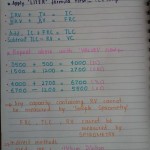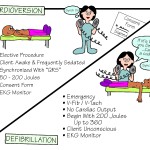Nursing Notes: Quick Review of Lung Volumes, Capacities and Ventilation Formulas The lung volumes that can be measured using a spirometer include tidal volume (TV), expiratory reserve volume (ERV), and inspiratory reserve volume (IRV). Residual volume (RV) is a lung volume representing the amount of air left in the lungs after a forced exhalation; this volume cannot be … [Read more...] about Nursing Notes: Quick Review of Lung Volumes and Formulas
Nursing Notes
Nursing Notes: Blood Groups & Rh Compatibility
Nursing Notes: Blood Groups & Rh Compatibility The ABO Blood Group System There are four major blood groups determined by the presence or absence of two antigens – A and B – on the surface of red blood cells: Group A – has only the A antigen on red cells (and B antibody in the plasma) Group B – has only the B antigen on red cells (and A antibody in the plasma) Group AB – … [Read more...] about Nursing Notes: Blood Groups & Rh Compatibility
Nursing Mnemonics: Preload vs Afterload
Nursing Mnemonics: Preload vs Afterload Preload Volume of of blood in ventricles at end of diastole (end diastolic pressure). Afterload Resistance left ventricle must overcome to circulate blood. … [Read more...] about Nursing Mnemonics: Preload vs Afterload
Nursing Study: Cardioversion vs Defibrillation
Nursing Guide: Cardioversion vs Defibrillation Cardioversion is a corrective procedure where an electrical shock is delivered to the heart to convert, or change, an abnormal heart rhythm back to normal sinus rhythm. Most elective or "non-emergency" cardioversions are performed to treat atrial fibrillation (A Fib) or atrial flutter (AFL), non-life threatening abnormal rhythms … [Read more...] about Nursing Study: Cardioversion vs Defibrillation



